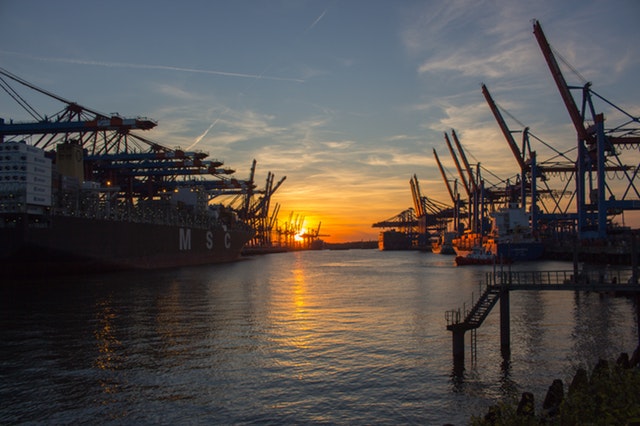
challenges
Wilhelmsburg, located between Hamburg city center and southern Harburg, is a shrinking district in the growing city of Hamburg. Wilhelmsburg is located on a marsh island in the Elbe, on which up to the 19th century mainly agriculture was operated. With the establishment of the free port in 1888 began the industrialization and, consequently, a fundamental structural change in the district.
Commercial land at Reiherstieg
In the Wilhelmsburger West, streets and canals were built from the middle of the 19th century, resulting in smaller and larger industrial plants, factories and apartments close to the harbor and the works. At the time of National Socialism, at the same time as the expanding arms industry, job-related multi-storey housing construction in the west and housing estates in the east developed. The storm surge of 1962 flooded large parts of the island.
Due to the historical development of the district is very heterogeneous structure: residential, allotment and green areas are between more or less intensively used commercial space, the middle is characterized by heavily frequented roads and brownfields of Deutsche Bahn. The stocking of the adjacent port area ranges from large-scale industrial use through logistics and distribution companies to the smallest commercial enterprises at the interface between port and district-related use. Despite the geographically central location of Wilhelmsburg in the city of Hamburg, the urban development link with the city is missing. Industrial and commercial enterprises and thus also port uses are becoming larger and larger, so that small-scale structured areas are being transformed. The economic structural change also affects the social and economic situation in Wilhelmsburg. Many jobs have been reduced; The high proportion of unemployed people reduced purchasing power, which had a negative impact on local retailing. In the course of this downward spiral, those who can afford it still leave the district. Wilhelmsburg is struggling with massive image problems, especially in areas that are heavily influenced by publicly subsidized housing. Due to the problems encountered, the situation and the deficits, Wilhelmsburg was not able to benefit from the overall urban development (for example, slight population growth and new workplace space) despite corresponding plans.
With various action plans for urban development, since 1981 intensive attempts have been made to use potentials and qualities in existing buildings and to adapt them to changes. Despite many project successes in detail, the stigmatization of the district as a whole could only be counteracted to a limited extent.
Hamburg-Wilhelmsburg is now faced with the challenge of reorganizing a settlement structure that has been shaped for decades by industry, commerce, port and transport construction, and in part also impaired, so that it is open to future sustainable development.